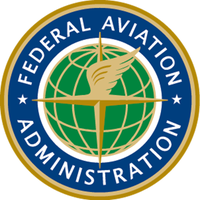The Crumbling Skies: A Call for Air Traffic Control Overhaul
May 21, 2025, 11:10 pm

Location: United States, District of Columbia, Washington
Employees: 10001+
Founded date: 1958
The air traffic control system in the United States is in dire need of repair. Recent events at Newark Airport and Denver reveal a troubling pattern. Equipment failures and staffing shortages are becoming the norm, not the exception. This is a wake-up call for the aviation industry.
In May 2025, Newark Airport faced a crisis. Communication and radar systems failed, leaving controllers blind for up to 90 seconds. Imagine a ship lost at sea, unable to see the shore. That’s what it felt like for air traffic controllers. They were left scrambling, trying to manage a busy airport with outdated technology.
The Federal Aviation Administration (FAA) responded by limiting flights. They capped arrivals and departures to 24-28 per hour. This was a necessary move, but it came at a cost. Airlines had to cut schedules, leading to cancellations and delays. Passengers were left stranded, their travel plans in disarray.
This isn’t just a Newark problem. Denver experienced similar issues. Controllers there also lost communication, struggling to manage air traffic. The system is fragile. Equipment failures are becoming a frequent occurrence. The air traffic control system is like an old car, breaking down just when you need it most.
The FAA has acknowledged the need for change. Transportation Secretary Sean Duffy announced a multibillion-dollar plan to upgrade the air traffic control system. This is a step in the right direction, but it feels like a band-aid on a gaping wound. The proposed $12.5 billion is just a down payment. The system needs a complete overhaul, not just a patch-up job.
The recent failures are alarming. They are symptoms of a larger problem. The air traffic control system relies on outdated technology. Many of the lines are old copper wires, a relic of the past. This antiquated infrastructure is a ticking time bomb. It’s only a matter of time before another failure leads to disaster.
The stakes are high. A deadly midair collision in January, which killed 67 people, highlighted the urgency for reform. This tragedy was a wake-up call. It forced officials to confront the reality of an aging system. Yet, despite the clear need for change, progress has been slow.
Air traffic controllers are overworked and under-resourced. The staffing shortages are a significant issue. After the Newark outages, controllers took trauma leave, further straining the system. The FAA is caught in a vicious cycle. Fewer controllers mean more flight cancellations, which leads to more stress and burnout.
The aviation industry is at a crossroads. It can either continue down this path of neglect or invest in a robust, modern air traffic control system. The choice is clear. Safety must come first.
Passengers deserve better. They deserve a system that works seamlessly, without the fear of cancellations and delays. They should be able to trust that their flights will take off and land safely.
The FAA must act decisively. The proposed upgrades are a start, but they need to be implemented quickly. The aviation industry cannot afford to wait. Lives are at stake.
In the meantime, airlines must adapt. They need to work closely with the FAA to manage schedules effectively. Cutting flights may be painful, but it’s necessary for safety. Fewer flights mean less congestion and fewer delays.
The public must also be informed. Transparency is crucial. Passengers should know what’s happening behind the scenes. They should understand the challenges facing air traffic controllers.
As the FAA moves forward with its plans, it must prioritize communication. Engaging with airlines, controllers, and the public will build trust. It will also foster a collaborative approach to solving these issues.
The air traffic control system is the backbone of aviation. It’s time to invest in its future. The safety of millions depends on it.
In conclusion, the recent failures at Newark and Denver are a stark reminder of the vulnerabilities in our air traffic control system. The need for reform is urgent. The proposed multibillion-dollar plan is a step in the right direction, but it must be just the beginning. The aviation industry must rise to the challenge. Safety and reliability should be the top priorities. The skies should be safe for all.
In May 2025, Newark Airport faced a crisis. Communication and radar systems failed, leaving controllers blind for up to 90 seconds. Imagine a ship lost at sea, unable to see the shore. That’s what it felt like for air traffic controllers. They were left scrambling, trying to manage a busy airport with outdated technology.
The Federal Aviation Administration (FAA) responded by limiting flights. They capped arrivals and departures to 24-28 per hour. This was a necessary move, but it came at a cost. Airlines had to cut schedules, leading to cancellations and delays. Passengers were left stranded, their travel plans in disarray.
This isn’t just a Newark problem. Denver experienced similar issues. Controllers there also lost communication, struggling to manage air traffic. The system is fragile. Equipment failures are becoming a frequent occurrence. The air traffic control system is like an old car, breaking down just when you need it most.
The FAA has acknowledged the need for change. Transportation Secretary Sean Duffy announced a multibillion-dollar plan to upgrade the air traffic control system. This is a step in the right direction, but it feels like a band-aid on a gaping wound. The proposed $12.5 billion is just a down payment. The system needs a complete overhaul, not just a patch-up job.
The recent failures are alarming. They are symptoms of a larger problem. The air traffic control system relies on outdated technology. Many of the lines are old copper wires, a relic of the past. This antiquated infrastructure is a ticking time bomb. It’s only a matter of time before another failure leads to disaster.
The stakes are high. A deadly midair collision in January, which killed 67 people, highlighted the urgency for reform. This tragedy was a wake-up call. It forced officials to confront the reality of an aging system. Yet, despite the clear need for change, progress has been slow.
Air traffic controllers are overworked and under-resourced. The staffing shortages are a significant issue. After the Newark outages, controllers took trauma leave, further straining the system. The FAA is caught in a vicious cycle. Fewer controllers mean more flight cancellations, which leads to more stress and burnout.
The aviation industry is at a crossroads. It can either continue down this path of neglect or invest in a robust, modern air traffic control system. The choice is clear. Safety must come first.
Passengers deserve better. They deserve a system that works seamlessly, without the fear of cancellations and delays. They should be able to trust that their flights will take off and land safely.
The FAA must act decisively. The proposed upgrades are a start, but they need to be implemented quickly. The aviation industry cannot afford to wait. Lives are at stake.
In the meantime, airlines must adapt. They need to work closely with the FAA to manage schedules effectively. Cutting flights may be painful, but it’s necessary for safety. Fewer flights mean less congestion and fewer delays.
The public must also be informed. Transparency is crucial. Passengers should know what’s happening behind the scenes. They should understand the challenges facing air traffic controllers.
As the FAA moves forward with its plans, it must prioritize communication. Engaging with airlines, controllers, and the public will build trust. It will also foster a collaborative approach to solving these issues.
The air traffic control system is the backbone of aviation. It’s time to invest in its future. The safety of millions depends on it.
In conclusion, the recent failures at Newark and Denver are a stark reminder of the vulnerabilities in our air traffic control system. The need for reform is urgent. The proposed multibillion-dollar plan is a step in the right direction, but it must be just the beginning. The aviation industry must rise to the challenge. Safety and reliability should be the top priorities. The skies should be safe for all.
